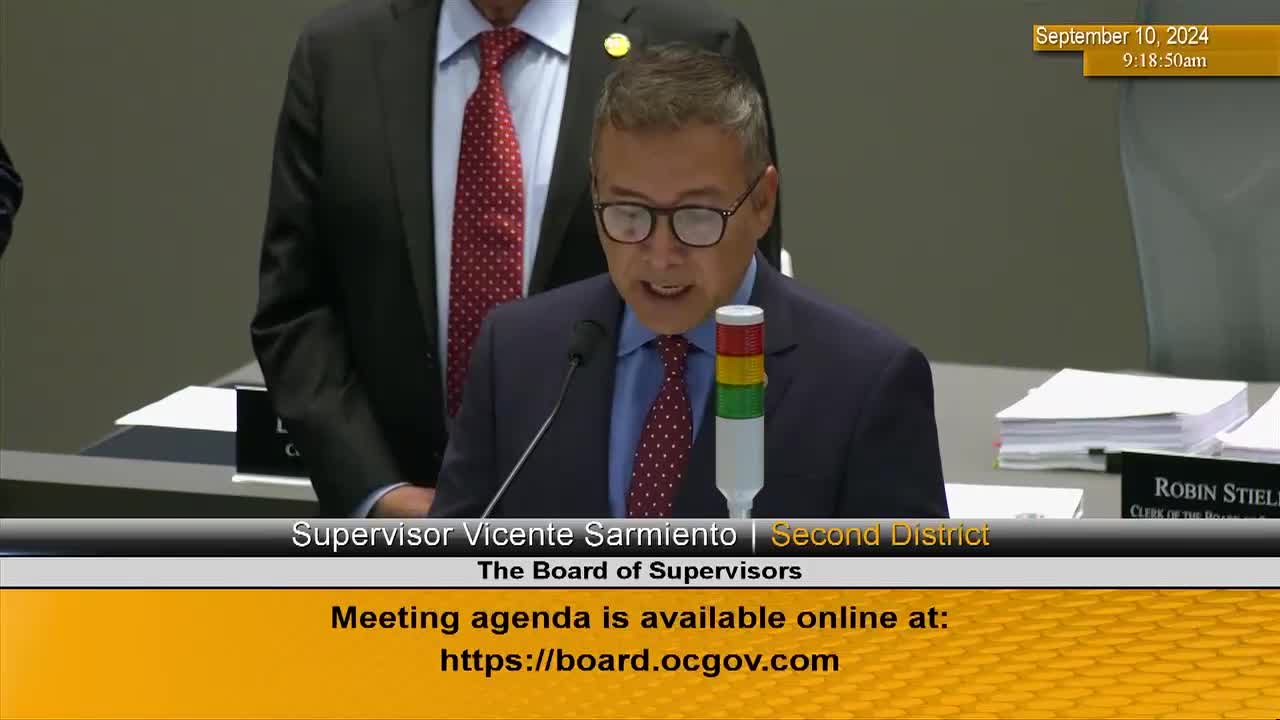Urban Heat Waves Expose Inequities and Demand Action
September 10, 2024 | Orange County, California
This article was created by AI summarizing key points discussed. AI makes mistakes, so for full details and context, please refer to the video of the full meeting. Please report any errors so we can fix them. Report an error »

In a recent government meeting, officials addressed the pressing issue of urban heat waves and their disproportionate impact on vulnerable populations in densely populated areas. The discussion highlighted the phenomenon known as the urban heat island effect, where urban regions experience significantly higher temperatures than surrounding rural areas, sometimes by as much as 7 degrees. This effect is exacerbated by the prevalence of heat-absorbing surfaces like roadways and rooftops, which contribute to elevated temperatures.
The meeting underscored the heightened risks faced by low-income communities and people of color, who are often located in neighborhoods that suffer from intra-urban heat islands. These areas, linked to historical factors such as redlining, experience higher temperatures and increased heat-related health issues, including dehydration and exacerbation of chronic conditions. Approximately 30% of households in these communities report difficulties in paying energy bills, limiting their ability to cool their homes effectively.
To combat these challenges, officials proposed several cooling strategies aimed at increasing urban greenery and improving building materials. Recommendations included enhancing tree and vegetative cover, installing green roofs, and utilizing cool pavements that reflect rather than absorb heat. The meeting concluded with a reminder that as climate change continues to intensify heat waves, proactive measures are essential to protect the health and well-being of urban residents.
The meeting underscored the heightened risks faced by low-income communities and people of color, who are often located in neighborhoods that suffer from intra-urban heat islands. These areas, linked to historical factors such as redlining, experience higher temperatures and increased heat-related health issues, including dehydration and exacerbation of chronic conditions. Approximately 30% of households in these communities report difficulties in paying energy bills, limiting their ability to cool their homes effectively.
To combat these challenges, officials proposed several cooling strategies aimed at increasing urban greenery and improving building materials. Recommendations included enhancing tree and vegetative cover, installing green roofs, and utilizing cool pavements that reflect rather than absorb heat. The meeting concluded with a reminder that as climate change continues to intensify heat waves, proactive measures are essential to protect the health and well-being of urban residents.
View full meeting
This article is based on a recent meeting—watch the full video and explore the complete transcript for deeper insights into the discussion.
View full meeting
